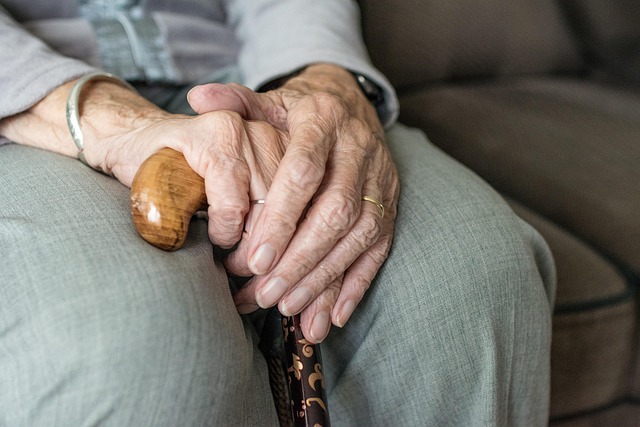Parkinson’s disease is the fastest-growing incurable neurological condition in the world at the moment. After Alzheimer’s disease, it is also the second most common neurodegenerative disorder, with almost 90,000 new patients diagnosed every year in the US alone. In the United Kingdom, the condition affects around 153,000 people. According to Parkinson’s UK, there is a significant gap in knowledge regarding the broader Parkinson’s disease symptoms and their impact. The condition can present more than 40 different symptoms and impacts each person differently. While the more commonly known symptoms are typically related to movement, there are several other Parkinson’s disease symptoms that people tend to dismiss or miss altogether.
Stiffness

Many Parkinson’s patients experience muscle rigidity or stiffness, affecting either one or both sides of their body. This feeling of stiffness reduces the person’s range of motion and often causes aches, pains, and general discomfort in the joints and muscles. It can also result in certain physical changes, such as a reduction in arm swinging when walking. This stiffness typically makes performing everyday activities very challenging. It also potentially contributes to slower mobility and fatigue over time.
Anxiety

Another early Parkinson’s disease symptom that often precedes physical symptoms is anxiety. Anxiety is not merely a reaction to the diagnosis of the disease. Instead, it is part of the condition itself, resulting from changes in the patient’s brain chemistry. These constant feelings of worry can often result in social reclusion and even anxiety attacks. Studies have suggested that certain activities can help manage anxiety and improve overall emotional well-being. These activities include regular exercise, meditation, and cognitive behavioural therapy.
Pain

One of the early symptoms of the disease is a range of different bodily pains. Many patients experience unexpected and persistent pain that does not subside, eventually leading to a check-up that confirms the diagnosis. This pain can often come in the form of musculoskeletal pain that affects the patient’s ligaments, tendons, muscles, bones, or nerves. It can also present as neuropathic pain resulting from damage to the nerves. Patients can also experience dystonic pain that results in cramps and muscle spasms and central pain caused by the improper functioning of certain pathways that control brain sensations.
Loss Of Ability To Smell

Hyposmia, or a loss of smell, is often one of the first Parkinson’s disease symptoms. It can arise years, perhaps decades, before a formal diagnosis is made. This symptom is often overlooked or attributed to age or other factors. According to one study, Parkinson’s disease-related brain alterations could start in the regions responsible for smell. While not limited to Parkinson’s disease, persistent scent loss may necessitate further medical attention. The only way to find out its cause is to have it looked at by a professional.
Fatigue and Sleep Issues

Parkinson’s disease causes changes to the brain chemistry that can affect a person’s ability to sleep properly. Some people experience issues sleeping long before any physical symptoms start to arise. These issues include restless leg syndrome, REM sleep behaviour disorder, and insomnia. Up to half of all Parkinson’s patients also state that fatigue is a common symptom. Regardless of how much rest they manage to get, these patients feel full of energy one day and then completely drained the next.
Tremors

Tremors are among the most common Parkinson’s disease symptoms. It is typically observed in the upper limbs, usually when the person is resting, rather than when the limb is in use. The tremors tend to lessen when the person is fully asleep or awake and active. For instance, the person’s hand may tremble when they aren’t doing anything, but then will stop when they shae someone’s hands. While common in the hands, the tremors can also occur in the legs, jaw, or lower lip.
Difficulty Balancing

Postural instability, or balance problems, is a typical movement-related symptom in Parkinson’s disease. It can cause repeated falls and a loss of confidence. This can make patients unwilling to go out in public or participate in everyday activities. While balance issues might occur early, they usually worsen in the later stages of the disease. The condition is usually linked to walking issues, and some people might require physical therapy or mobility assistance for safety.
A Reduction In Facial Expressions

Also known as hypomimia, face masking is an early Parkinson’s disease symptom that makes it difficult for people to interpret how you are feeling. This symptom causes the person’s face to express less, often leading to assumptions that they must be upset or depressed. For the patient, it can often be frustrating to constantly assure others that they are fine. The facial muscles become slow and stiff, making it hard to raise your eyebrows or smile. Since our facial expressions are an important part of the way we communicate, this can negatively affect the patient.
Change In Handwriting and Movement

Micrographia, or unusually small and cramped handwriting, is often one of the first Parkinson’s disease symptoms to arise. As a person writes, their letters may get smaller and more difficult to read. This change is produced by delayed movement and poor motor control, both of which have an impact on fine motor skills. Patients may also have trouble with everyday tasks that require dexterity, such as buttoning or zipping their clothing. These seemingly minor changes can be an early indicator of underlying neurological disorders.
Depression

Depression is a typical non-motor symptom of Parkinson’s disease that can develop at any stage, including before diagnosis. It is more than just being melancholy; it may include persistent low mood, fatigue, and a loss of interest in activities. Depression can also exacerbate motor and cognitive problems, making everyday life more difficult. These mood shifts are associated with chemical and anatomical changes in the brain. Medication, therapy, and lifestyle modifications are all viable treatment choices for effectively managing Parkinson’s disease symptoms.
Read More: Breakthrough Study Uncovers Previously Unknown Cause of Parkinson’s Disease

